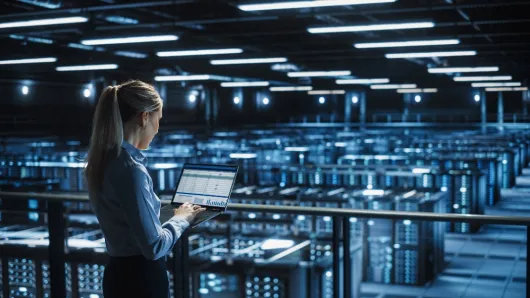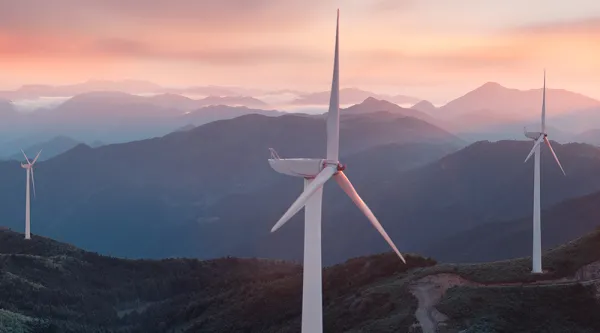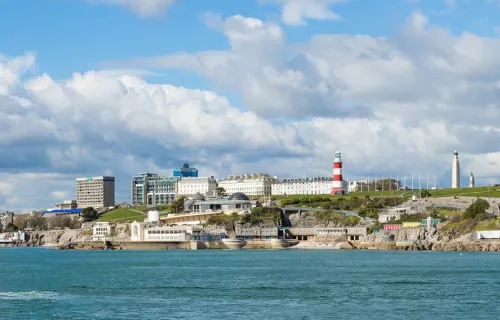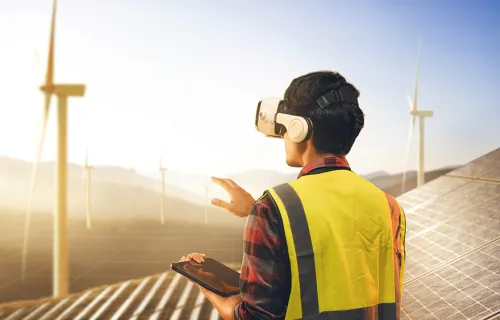A report released by French think tank The Shift Project, highlights that emissions generated by technologies are growing by 6% a year1. Whilst rapid digitalisation has undoubtedly contributed to the world’s unprecedented climate change challenges, when implemented correctly, technology can also be a major accelerator of sustainability initiatives.
I introduced this vital link between technology and responsible, sustainable operations in my previous blog, so if you missed it, please catch up before you carry on reading. In this follow up blog, I now explore some of the innovative technologies available to effectively reduce your organisation’s carbon footprint. As part of your organisation’s IT strategy, you may wish to consider adopting cloud, edge computing or virtual desktop infrastructure.
1. Digital sustainability in the cloud
A key step in achieving digital sustainability is to move out of costly, power-hungry data centres and into more carbon neutral environments provided by major public cloud providers (hyperscalers). These now offer tools enabling you to calculate your carbon footprint when consuming services2.
Each of the major public cloud providers are at different stages on their sustainability journeys. Microsoft already claims to be carbon neutral (although this has largely been achieved using carbon offsets), whilst Amazon Web Services (AWS) and Google Cloud Platform (GCP) are moving towards running entirely on renewable energy, with the intention to go further.
Whilst it is more difficult to observe your carbon footprint through smaller public cloud providers, there are free tools to help with this, such as the open-source Cloud Carbon Calculator sponsored by Thoughtworks2. Used primarily with Azure, AWS and GCP, the solution is open and extendable with the potential to add other cloud providers, on-premise or co-located data centres.
Implementing the latest native cloud technologies will also enable your organisation to run workloads as efficiently as possible and only when necessary, thereby reducing your carbon footprint further. For example, you can use elastic cloud services and autoscaling features to minimise unused compute resources, and run batch workloads at times when grid carbon intensity is lower.
2. Edge computing
The introduction of 5G has allowed edge computing to gain ground. This puts storage and servers where the data is, and often requires little more than a partial rack of equipment to operate. Edge computing is therefore widely adopted to overcome the limitations of latency associated with pushing data to a central data centre location.
Whilst it is envisaged this will result in less power consumption, this is only possible when deployed in highly efficient, AI-enabled HVAC (heating, ventilation and air conditioning) systems which handle the power and cooling of the servers. For organisations with more distributed sites, this is a difficult expense to justify; especially when buildings haven’t been designed and built specifically to be data centres and to do so, will require them to be refurbished.
There are also security concerns around the deployment and ongoing management of these. Nevertheless, whether you use edge computing or data centres, you can use the reduce, reuse, recycle methodology to become more efficient:
Reduce
- Use renewable energy wherever possible. This includes replacing backup diesel generators with green hydrogen alternatives.
- Utilise precise monitoring and liquid cooling technologies. Also switch off environmental units where possible, especially during colder months.
- Power optimisation, including the use of cold and warm aisles.
Reuse
- Asset planning to redeploy rather than dispose of resources, as well as measures to expand server life.
- Waste heat recovery.
- Refurbished server rooms to make them more energy efficient.
Recycle
- The first step is to measure consumption. Without effective measurement, you cannot control your consumption.
- Recycle materials such as metals and plastics used in data centres, instead of throwing away.
- Ensure your utility provider has a roadmap towards net zero, i.e. plans to use renewable energy.
3. Carbon reduction through virtual desktop infrastructure (VDI)
VDI is a virtualisation solution that enables you to host an operating system and its applications in a central location, such as an on-premise data centre or public cloud. You can then deliver these as virtual applications and desktops over a network (a local area network, wide area network or the internet) to a range of endpoint devices including PCs, laptops, thin clients, mobile phones and tablets.
These VDI-delivered applications and desktops have minimal hardware requirements. This allows you to use cheaper endpoint devices such as thin/zero clients, and to even repurpose legacy devices. I will provide more detail on this great method for reducing your overall carbon footprint in my next blog.
Accelerate your digital sustainability journey with CGI
This blog introduces just some of the many technologies that can help your organisation effectively transition towards net zero. But we understand it is difficult to know how to take those next steps on your sustainability journey.
CGI is here to help. You can learn more about our responsible approach to helping clients’ digital transformation journeys in our Digital Backbone - Sustainability PoV. Or if your organisation wants to look beyond technology alone to create positive economic, social and environmental impact, our Sustainability and Climate Change Advisory experts have the knowledge and experience to help.
If the topic of sustainable business has piqued your interest, please scroll to the footer of our webpages and subscribe to receive our new blog notifications, this will help you keep an eye out for my next post where I will explore e-waste and the circular economy.
References
1 https://theshiftproject.org/en/article/lean-ict-our-new-report/









